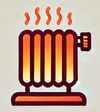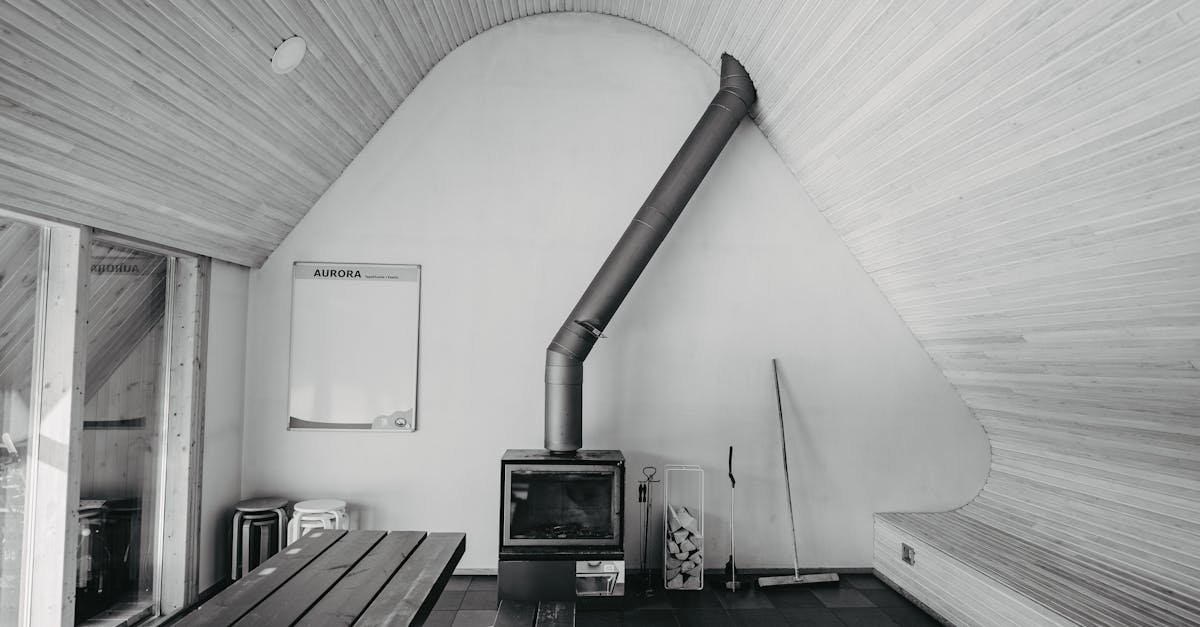When it comes to portable heaters, safety features are crucial for preventing accidents and ensuring peace of mind. Look for models with automatic shut-off systems that activate if the heater tips over or overheats. Also, check for safety certifications like UL or ETL, which indicate the product meets strict safety standards.
Another important feature is a cool-to-the-touch exterior, which helps protect against burns. Some heaters also come with built-in timers and programmable settings, allowing you to control usage and reduce the risk of overheating. By prioritizing these safety features, you can enjoy the warmth of your portable heater without worry.
Overview Of Portable Heater Safety Features
Portable heaters provide warmth but require attention to safety features. Recognizing essential safety elements can help prevent accidents.
Safety Certifications
Look for space heaters certified by recognized labs like Underwriters Laboratories (UL) or Intertek (ETL). These labels show that the heater meets specific safety standards. Using a certified heater boosts confidence in its reliability.
Automatic Shut-Off and Overheat Protection
Heaters equipped with an automatic shut-off feature enhance safety. This feature activates if the heater tips over or is not upright. Overheat protection is equally vital. This feature turns off the unit when it exceeds a certain temperature.
Ground-Fault Circuit Interrupter (GFCI) Plug
A GFCI plug helps prevent electric shock, especially in wet areas. Using this type of plug adds an extra layer of safety, particularly in bathrooms or kitchens. Choosing a heater with a GFCI plug is crucial for safe usage near water.
Cool-To-The-Touch Exterior
A cool-to-the-touch exterior limits burn risks. This feature is essential if children or pets are present. Keeping surfaces cool ensures safer interactions with the heater.
Built-In Timers and Programmable Settings
Heaters with built-in timers let you control usage. Setting a timer confines operation times, reducing overheating risks. Programmable settings also help manage heat levels, promoting safer conditions.
Prioritizing these features can make your heating experience safer and more enjoyable. Stay informed and select heaters that prioritize these essential safety elements.
Types Of Safety Features
Safety features in portable heaters are essential for preventing accidents. Focus on the following key features when selecting a heater.
Tip-Over Protection
Tip-over protection automatically shuts off the heater if it falls over. This safety feature is crucial. It prevents the heater from igniting flammable materials nearby. A tip-over switch or sensor helps ensure the heater remains safe in a busy space.
Overheat Protection
Overheat protection shuts down the heater if it reaches a dangerous temperature. This feature reduces the risk of fire, keeping your environment safe. When a heater gets too hot, automatic shut-off engages, ensuring it doesn’t continue to operate.
Cool-To-Touch Exteriors
Cool-to-touch exteriors minimize burn risks during operation. These materials stay cool even when the heater runs. This safety feature is vital in homes with children and pets, enabling safe interaction without worrying about burns.
Benefits Of Portable Heater Safety Features
Portable heater safety features provide numerous advantages that enhance user safety. Automatic shut-off systems engage when the heater overheats. This action prevents fires and ensures you maintain a safe environment.
Tip-over switches offer additional peace of mind. When a heater tips over, the switch turns it off. This feature reduces the risk of igniting flammable materials nearby.
Thermostats play a crucial role as well. They monitor room temperatures. A thermostat turns the heater on and off as needed, preventing overheating. This not only protects against fire hazards but also cuts down energy consumption.
A cool-to-the-touch exterior prevents burns. In homes with children or pets, this feature is vital. It encourages safe interaction with the heater, alleviating worry about accidental injuries.
Timers and programmable settings enhance control over heater use. You can set the heater to operate for specific times. This feature manages heating periods effectively, further cutting overheating risks.
Using a Ground-Fault Circuit Interrupter (GFCI) plug also boosts safety. It protects against electric shocks, especially in wet areas. Installing GFCI plugs in bathrooms or kitchens safeguards you while using portable heaters.
Incorporating these safety features helps create a worry-free heating experience. By prioritizing these options, you can enjoy comfort without compromising safety.
Common Safety Standards and Certifications
Safety standards and certifications play a crucial role in portable heater safety. Look for products that meet recognized safety criteria. This can provide peace of mind while using a portable heater.
UL Certification
UL certification indicates that a heater meets strict safety guidelines. The Underwriters Laboratories (UL) tests heaters for safety hazards. These include fire risks, electrical shock, and material durability. When a heater has UL certification, you know it’s undergone rigorous testing. This certification helps ensure safe operation in your home.
ETL Listed
ETL certification, issued by Intertek, also validates safety in portable heaters. This testing examines product performance and safety compliance. ETL listed products follow the same safety protocols as UL certified items. Ensure your heater displays the ETL mark for added assurance. It signifies adherence to high safety standards, making it reliable for everyday use.
Best Practices For Using Portable Heaters Safely
Using portable heaters requires caution to ensure safety. Follow these best practices for a secure heating experience.
- Maintain Distance: Keep heaters at least three feet away from furniture, curtains, and other flammable items. This minimizes fire risk and prevents heat-related hazards.
- Turn Off When Unattended: Always turn off heaters when you leave the room or go to sleep. Unattended heaters can lead to accidents, even those with safety features.
- Limit Extension Cord Use: Plug heaters directly into wall outlets. Using extension cords increases the chance of overheating, leading to fire risks.
- Choose Approved Spaces: Use heaters in designated areas. Avoid placing them in bathrooms or near water, where electrical hazards can arise.
- Use Clear Pathways: Ensure that the area around the heater is clutter-free. This promotes safety and avoids accidental tip-overs or blockages.
- Regular Maintenance: Clean your heater regularly. Dust buildup can cause overheating and affect its efficiency. Check for frayed cords and other signs of wear.
- Stay Alert for Malfunctions: Pay attention to unusual sounds or smells. These could indicate a problem. If noticed, turn off the heater immediately and seek professional help.
- Educate Family Members: Teach everyone in your home about heater safety. This includes children and pets, who can sometimes inadvertently create hazards.
Following these guidelines helps ensure a safe and effective heating experience with portable heaters.
Conclusion
Prioritizing safety features in portable heaters is essential for a secure and comfortable environment. By choosing models with automatic shut-off systems and safety certifications like UL or ETL, you can significantly reduce the risk of accidents. Features like tip-over protection and cool-to-the-touch exteriors are especially important if you have children or pets at home.
Incorporating built-in timers and GFCI plugs adds another layer of safety, ensuring your heater operates efficiently without overheating. Following best practices for usage and maintenance further enhances your safety. With the right precautions and knowledge, you can enjoy the warmth of your portable heater while keeping your home safe.








